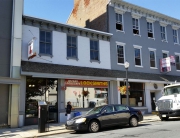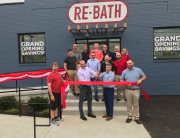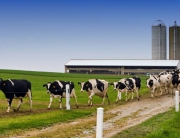by P.J. Reilly, staff writer
Intelligencer Journal/Lancaster New Era; January 29, 2010
Lancaster County commissioners on Wednesday created a program aimed at creating jobs and improving blighted areas in parts of the county where unemployment, poverty and home-foreclosure rates are highest.
The Lancaster County Recovery Zone Facility Bond Program is expected to disburse $14.1 million in federal stimulus funds to help new business ventures open within those areas designated under the program as the county’s Recovery Zone.
“I’m hopeful some of these projects will be manufacturing projects that bring with them good-paying jobs,” said Commissioner Craig Lehman.
The stimulus money actually will be paid to banks to allow them to lower interest rates on loans they would provide to business owners seeking financing for their projects, according to Lyle Hosler, project manager for Economic Development Co. of Lancaster County.
EDC Finance Corp. will market the program and review projects to determine which should receive funding assistance.
Ultimately, the county commissioners must grant final approval to award funding assistance through Redevelopment Authority of Lancaster County.
In creating the financing program Wednesday, the commissioners also established the boundaries of Lancaster County’s Recovery Zone.
Matthew Sternberg, executive director of the redevelopment authority, said he and EDC officials decided the county’s urban growth and village growth areas, as defined in Lancaster County Planning Commission’s comprehensive plan, would fit the federal requirements for the zone.
Those areas generally have ample utilities, commercially zoned lands and access to major roads and public transportation, and they have higher rates of poverty, unemployment, blight and home foreclosures.
EDC reported that in the county as a whole, the poverty rate is 5.7 percent and the unemployment rate is 7.5 percent.
In the Recovery Zone, the poverty rate is 6 percent and unemployment is 8.4 percent.
The largest area of the Recovery Zone is in and around Lancaster city. Arms of the zone, however, stretch to outlying areas, such as Denver and Elizabethtown boroughs, Gap and Wakefield.
To be eligible for the program, a business must be located within the zone, and it must be able to secure its total financing by the end of 2010.
“To make the most effective use of this program, we’re going to need projects that are pretty much ready to go — shovel-ready — or they’re really past the concept stage,” Hosler said.
Almost any type of business qualifies, except for residential rental properties, shopping centers, golf courses, gambling facilities, tanning salons and liquor stores.
“It can’t be things that generally are of a fun nature,” Hosler said.
Examples of acceptable projects cited by EDC include, but are not limited to:
- Commercial and retail buildings.
- Manufacturing facilities.
- Grocery stores.
- Hotels.
- Biotech facilities.
Projects that will be given the highest priority, according to EDC, include those that would create new jobs, stimulate additional capital investment in areas of high unemployment or redevelop vacant or underutilized urban properties.
“The thing I like about this program partnership is this is going to be business-decision types of lending made by the banks,” said Commissioner Dennis Stuckey.
EDC plans to schedule a meeting in mid-February, Hosler said, to explain the Recovery Zone program to the public, banking officials and potential applicants.
E-mail: preilly@lnpnews.com
copyright ©2010 Lancaster Newspapers. Used with permission.
PO Box 1328, Lancaster PA 17608, (717) 291-8811






Recent Comments